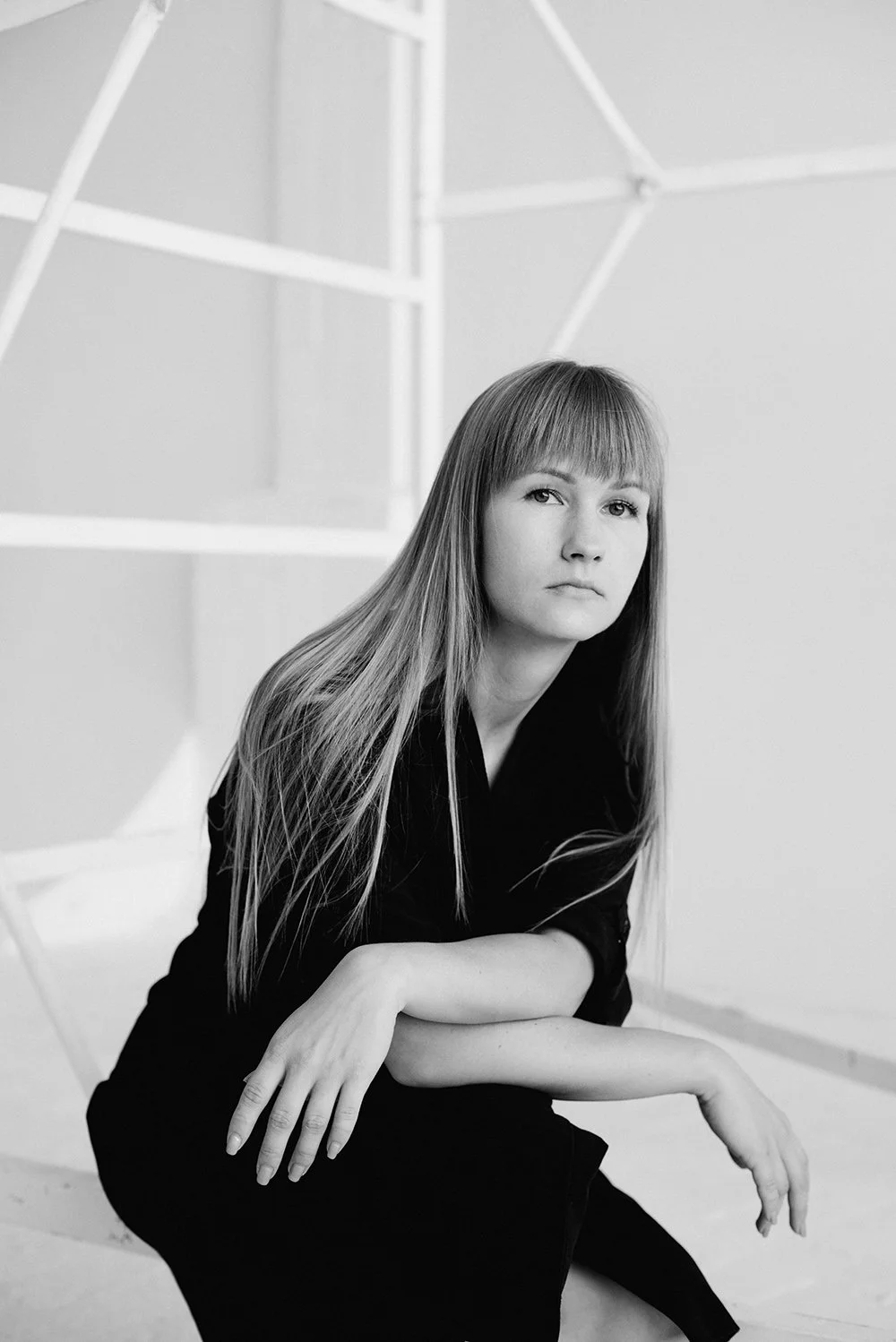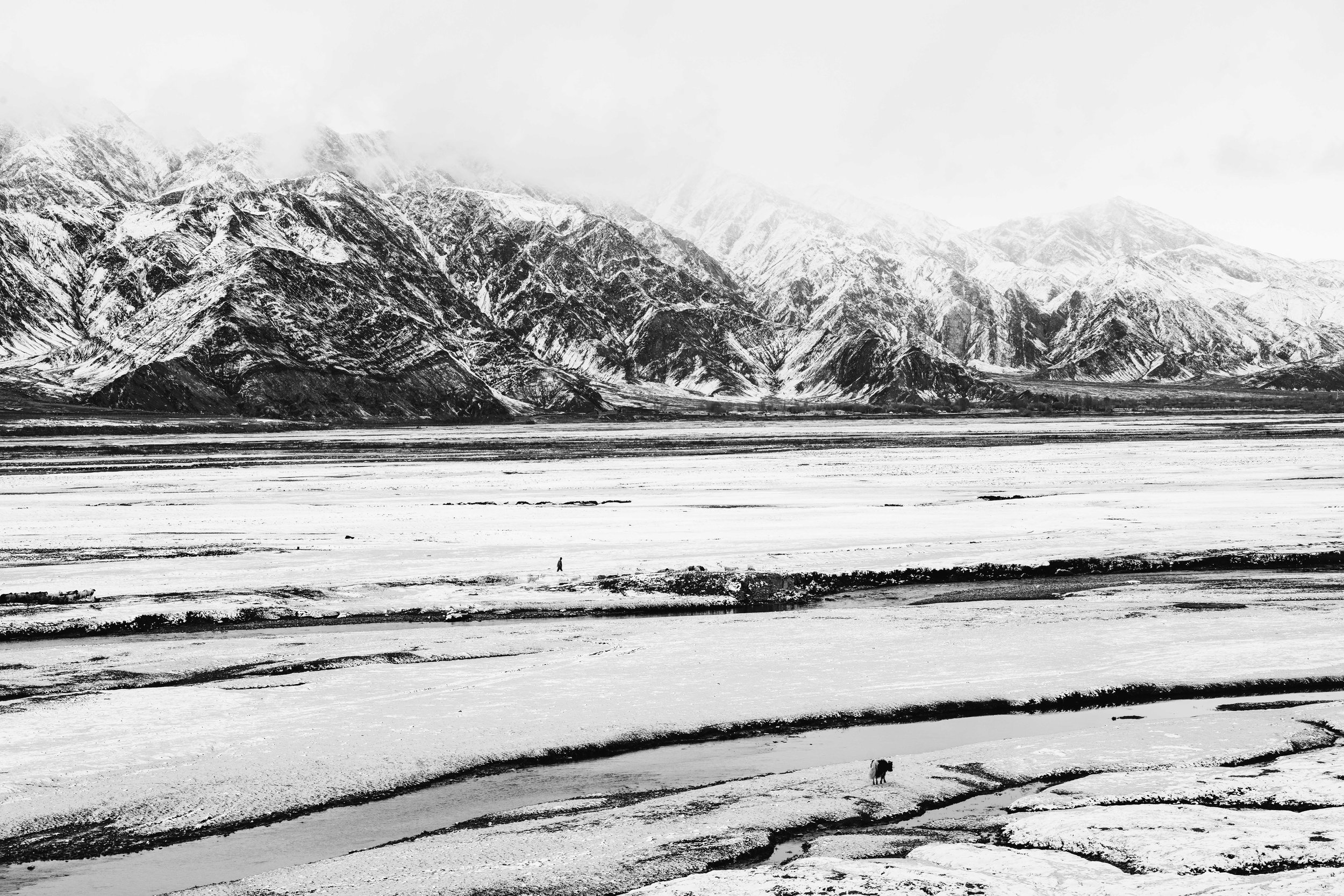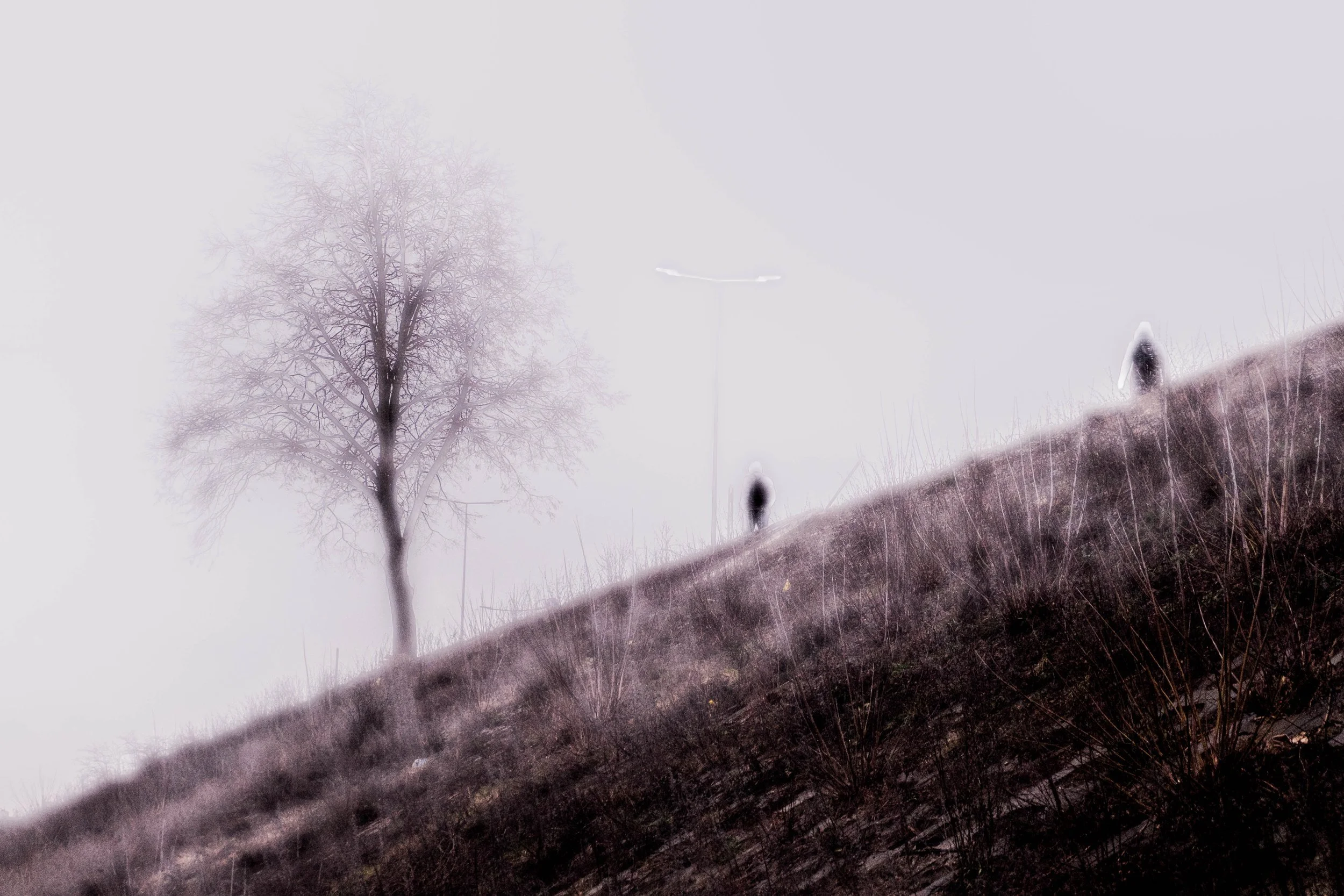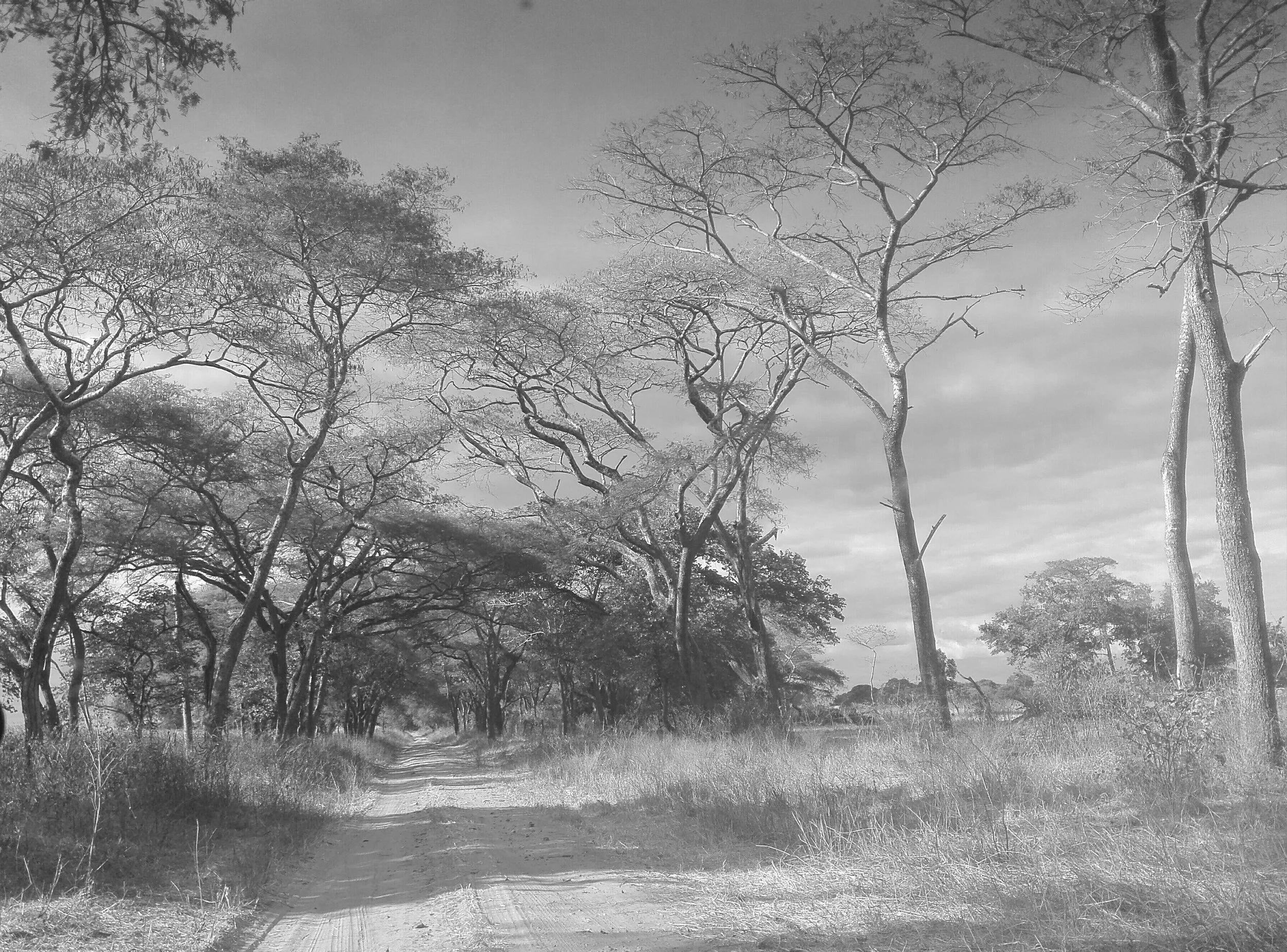10 Questions with Evgeniya Strygina
Al-Tiba9 Art Magazine ISSUE13 | Featured Artist
Evgeniya Strygina (b. 1989) is a London-based contemporary artist who specialises in landscape and architecture photography as she captures urban and natural environments to highlight both their relation to and their autonomy from human beings.
Following her early essays in film and digital photography as a teenager, Evgeniya took a real interest in the art of picture-taking while studying for her degrees in journalism and Spanish in Moscow.
After graduating, she completed two courses at the Fine Art Photography School, also in the Russian capital, and a year-long course on contemporary art theory and practice at the Free Workshops, Moscow Museum of Modern Art (MMOMA).
Between 2017 and 2019, Evgeniya took part in at least a dozen group exhibitions in Moscow, including two shows at the MMOMA, art fairs, biennales, and festivals, including the Festival of Visual, Sound and Performing Arts in Brindisi, Italy.
After taking a hiatus from art photography, Evgeniya relocated to the UK in 2022 to resume her artistic career and work on new projects, further exploring her preferred themes, such as the nature of space and longing for home.
Evgeniya Strygina - Portrait
ARTIST STATEMENT
As a contemporary photographer with an interest in shooting both urban and natural landscapes, Strygina makes a point of keeping her images almost or totally uninhabited as she considers people to be but one part of the world as opposed to being its centre.
Even in her pictures of architecture, obviously built by people for other people to use, she is fascinated by the space and its details rather than its occupants. Juxtapositions, interactions and contradictions, rhythms and rhymes – be they intended or otherwise – are what she never stops looking for in nature and cities.
In an attempt to make the viewer see aspects of the landscape that routinely go unnoticed, she offers a different perspective on things and deliberately strips down the style of her photographs. Minimalistic and geometric, her pictures are both an experiment in deconstructing reality and a quest for quiet harmony in our noisy existence.
She is also keen on studying the notion of home, which could be both a place and a non-place and portraying a longing for an environment you can call your own. This is probably because, being born in a small town and currently living hundreds of miles away from it, she cannot but wonder where she actually belongs.
And there was no sky, Photography, 2016 © Evgeniya Strygina
AND THERE WAS NO SKY | Project Statement
The line that has separated from eternity is no longer there. The step behind the horizon has been taken. The final hurdle has been overcome. In the unreal space beyond what is possible lies the naked reality, without any speculations or distortions, where the world has been decomposed into primeval elements and is devoid of any geographic characteristics whatsoever. Such notions as "sky," "water," and "sand" have made way for elements of sacral geometry of "patterns," "shadows," and "spots."
Will our eyes be able to take in the entire breadth of the void rushing in, which, being a deeply personal notion, is only visible to the inner sight? Are we capable of touching this incorporeal matter and committing to memory this ephemeral projection that only lasts for a few seconds?
And there was no sky, Photography, 2016 © Evgeniya Strygina
Get your limited edition copy now
INTERVIEW
Let's talk about yourself first. Why are you an artist, and how did you become one?
For me, art is an important medium of communication. I can share my worldview with the audience without forcing my opinion on them but rather suggesting they think about versions and interpretations. I want them to reflect on the new visual and conceptual perception of familiar places and events, to discover how ordinary things that seem unprepossessing can coalesce into a harmonious, revolting, perfect, or perfect irreal picture. What I enjoy is creating my own reality and new spaces instead of capturing places, objects, and pre-existing reality. In doing so, I invite the audience to engage in a dialogue or, rather, a thought-provoking discussion.
Ever since I was a child, photography has been a part of my life. My mom has been working in the business of producing black and white photographic paper for more than 40 years. It is a technical process, though, and I was engaged in it rather vicariously. It was also void of any creativity. No one told me that it, in fact, existed, but I knew that it did, somewhere, and embarked on my own quest to find it. When I studied at university, I got a reflex camera that was considered high-end at the time. I fumbled with the settings and shooting modes and experimented with photo editing. With that said, I never took any interest in discussions about focal distance, diaphragm, exposure, and depth of field. I don't see the technical characteristics of photo equipment as something directly connected to the value of a photograph. A camera is just a tool. The most important thing for me was not to learn how to use it perfectly but rather to find out what I could do with it. As Henri Cartier-Bresson said, "Technique is important only insofar as you must master it in order to communicate what you see. In any case, people think far too much about techniques and not enough about seeing." It was the desire to discover my own vision that took me to The Fine Art School of Photography in Moscow, where I attended Vladimir Seleznev's original course on visual comprehension. While in school, I was taught to articulate everything I'd felt before on the inside but couldn't verbalize, e.g., the metaphors in photographic art, the work of colour and rhythm, and the search for the peculiar in the ordinary. The course made me change my habits – I started shooting in locations I used to avoid, thinking more before pressing the shutter button, and looking at things from a different perspective. It was very hard, but that's what growth is all about. In the words of Cartier-Bresson, it became my own "decisive moment". The question of "What next?" came up. It was obvious that I'd made progress in my photography skills, but I was still worlds away from what I was craving the art. Then I enrolled at Free Workshops, Moscow Museum of Modern Art (MMOMA), and took a year-long course on contemporary art theory and practice. It turned out that studying art, especially in its contemporary form, is about as easy as chasing your own tail if you're a dog. It appears to be so close, it's happening right here, and now, yet it's so mercurial that it doesn't let you catch up. You can only snap your jaws as you try. It was an achingly good year. I had to come to terms with the fact that the vast majority of the ideas you just came up with have already been put into practice by somebody else. It was yet another challenge and a way to evolve. For me, it became an important step in starting new projects and presenting them in front of the general public. I took part in at least a dozen group exhibitions in Moscow, including two shows at the MMOMA, art fairs, biennales, and festivals, including the Festival of Visual, Sound, and Performing Arts in Brindisi, Italy. I could call this period my artist's origin story.
And there was no sky, Photography, 2016 © Evgeniya Strygina
You studied in Moscow but currently live and work in London. How has this relocation influenced your work?
Relocating from Moscow to London had a significant impact on my work, as it involved adapting to a new culture, language, and professional environment. I guess this experience can broaden my perspective and offer new opportunities for growth and learning.
My decision to relocate wasn't impulsive, nor was it spontaneous. It was very conscious. I understood why I was doing it and set some specific goals for myself. I have only been here a short time, just a few months, and it's too early to sum up the results, even the interim ones. I'm still exploring the surroundings and how it all makes me feel. I allowed myself some time to adapt and am trying to consciously live through this new emotional experience. I meet new people, immerse myself in the local art world, hold talks about collaborations with galleries, and get published in magazines. I took part in an exhibition and am now getting ready for a few more. Most importantly, I'm analyzing my past creative phases and working on new projects.
Living and working in a multicultural city like London will hopefully help me gain diverse perspectives and enable me to develop a more nuanced understanding of the world.
You recently went back to photography after a hiatus. What inspired you to resume your art career?
Relocating most definitely contributed to it. I received the UK's Global Talent visa as an exceptional talent in visual arts. I think I've been given a unique chance, and in a way, I have a great responsibility to myself to make the most out of this opportunity. I did go on a hiatus. It had to do with a lot of different reasons, some of them being personal, others not so much. In any work, whatever I do, progress and development are what matter most to me. It just so happened that I didn't feel much progress being made in the years prior to the hiatus. Russia's art market is still shaping up. The situation has become significantly better in recent years. The audience acquired visual erudition, knowledge of the history of photography, and modern visual culture. There are some decent laboratories where photographers can print images and frame them using high-quality materials. There are talented curators and world-class exhibition venues. Yet, the art industry is still in its infancy. Photography is almost never deemed to be a work of art. Not everyone – I mean both collectors and photo artists – has a correct idea about pressings, certificates of authenticity, or the formation of prices for prints. I personally participated in an art fair in Moscow and was faced with the fact that the visitors saw it as an exhibition rather than an event where you could purchase the works. From what I've gathered, the Western audience sees it as the norm to surround themselves with works of art, to invest in art, to start home collections, whereas, in Russia, there is this notion of spending money in a smart way on something more practical, something that can be of use. In that respect, even a photograph taken by a distinguished artist that has seen many exhibitions, publications, and awards will still come second to a washing machine, for instance. Even if they like it a lot, people will always postpone purchasing a work of art indefinitely and wait till better days that may never come. For artists that work with fine art photography, this means not only not being able to earn money by doing their creative work but also a sort of vacuum that appears when you've left alone with your works and can't release them into the world. In my case, I needed a pause to figure out what to do next and whether I was able to move forward with my art and enter a brand new level.
And there was no sky, Photography, 2016 © Evgeniya Strygina
And there was no sky, Photography, 2016 © Evgeniya Strygina
About your work, why did you choose photography specifically over other mediums?
For me, photography is a powerful tool for creating my own visual universe on the cusp of documenting reality and an artist's figment of imagination. I have a degree in journalism and the documentary part of it is close to my heart. However, real objective journalism doesn't allow for manipulating reality whereas contemporary photography presents this opportunity and even encourages it. I find it interesting to balance between these two states.
You work primarily with landscape and architecture photography. Why did you choose these two fields? And what do they represent for you?
My landscape is not a landscape in the traditional sense of the word. It's hardly suitable for travel magazine covers, although I will say I've been to over 30 countries, and during my travels, I've accumulated plenty of material, surely enough for a tour guide. But my goal is different. I want to show spaces beyond what is possible, where the world is broken down into its primordial elements and devoid of any geographical features. The concepts of "sky", "water", and "sand" here are eclipsed by the elements of sacred geometry – "patterns", "shadows", and "spots". It is more important for me to draw the outlines of the world that exists both in reality and in imagination, somewhere at the confluence of the conscious and unconscious.
My architectural series are often not tied to a specific place, in a way, it is a collective image of a modern city that serves as a machine for living, it is an endlessly mechanized environment where man is but a cog in this complex construction, in this perpetual motion machine rolling on and on, blurring faces and leaving only shadows along the way. Without even noticing it, we blend into our environment and are no longer separate, individual structures, as we grow into pedestrian tunnels, as we become petrified details of sculptures, or turn into barely visible reflections in shop and skyscraper windows. Whereas the big city seems to be gaining a body of its own – looking at the world with its windows wide open, reaching for the sky as its high-rises stand proudly towering over people beneath.
We rarely see human figures in your photographs, although we often perceive their presence from the man-made architectures and elements you depict. Is there a specific reason behind this choice?
I make a point of keeping my images almost or totally uninhabited, as I consider people to be but one part of the world as opposed to being its centre. Even in my photos of architecture, obviously built by people for other people to use, I am fascinated by the space and its details rather than its occupants. Juxtapositions, interactions and contradictions, rhythms and rhymes – be they intended or otherwise – are what I never stop looking for in nature and cities.
I have a series called "Pendulum", the name refers to the concept of pendulum migration. This is a phenomenon that occurs in many large cities. Megapoleis are really attractive to work in, but extremely expensive to live in. As a rule, people settle on the outskirts, which brings about daily pendulum migration – from home to work and back. The construction conveyor belt tirelessly produces identical residential buildings, with new neighbourhoods being completed in a matter of months, even though they have little to offer in terms of employment. Home is turning into nothing but a place to sleep in, a starting point for the day's exhausting journey – through the miles-long traffic jams to your office and back. Home does not feel like "a place" anymore; it has become a reality of transit with effaced identity, a temporary shelter, a sterile space devoid of any distinctive features.
In this series, I purposefully avoided human presence. I wanted to convey a duality of both densely populated and uninhabited houses. Looking at the images, we realise there can be thousands of people inside, but we can't tell if they are really there, or got frozen somewhere in the timelessness, in their eternal pilgrimage between work and home.
And there was no sky, Photography, 2016 © Evgeniya Strygina
What messages are you trying to communicate with your art? And what do you think differentiates your approach from others?
I would say that I can find structure in nature and natural beauty in buildings. In an attempt to make the viewer see the aspects of landscape and architecture that routinely go unnoticed, I offer a different perspective on things and deliberately strip down the style of my photographs. Minimalistic and geometric, my pictures are both an experiment in deconstructing reality and a quest for quiet harmony in our noisy existence.
I don't consider myself a landscape or architecture photographer in the classical sense. I avoid postcard views popular among travel photographers, and I use lenses that are, to put it mildly, unsuitable for shooting architecture. I don't conform to the generally accepted laws of the genre. What matters to me is what emotion, association, and mood my image evokes, which state it immerses the viewer in, not where it was taken, and which technical means were employed.
I have often heard that my works look like paintings, and even when looking closely, viewers, curators, and art professionals can't tell that it is a print, not a canvas. People working with graphic design have confused some of my shots with AI-generated images and argued with me that there is no way this image could occur in real life. When I hear such things, it makes me very glad, because it means that I've managed to reach my goal, which is to shoot reality in a way that confuses the viewer and transfers them to the surreal space.
Is there anything else you would like to experiment with?
If we are talking about the medium, no. I am still interested in photography and still learning its language. I enjoy speaking through pictures. I am past the stage of reading by syllables, now I am moving towards creating deep, insightful, truly original texts — I mean, visual texts, of course.
And there was no sky, Photography, 2016 © Evgeniya Strygina
And there was no sky, Photography, 2016 © Evgeniya Strygina
What are you working on now? Do you have any new projects or series you are currently developing?
My current project, "Home: A Journey of Displacement", explores the theme of home through the experiences of Russian and Ukrainian individuals who have been forced to leave their homes due to the conflict in 2022 and now reside in the UK. The project builds upon my previous work, "Pendulum", which examined the concept of home as a "non-place". But if in "Pendulum", I focused on homes without people, then in the second part, "Home: A Journey of Displacement", I would like to focus on human stories.
I aim to delve deeper into the personal experiences of those who have been displaced. I want to capture their current perception of home, by photographing them in the place or with an object that gives them a sense of home. I am eager to delve into the lives of these people and explore how they have adapted to their new surroundings while still maintaining a connection to their homeland. My goal is to shed light on the challenges and triumphs that come with building a new home in a foreign country and to offer a nuanced understanding of what "home" means to those who have been forced to leave behind the place they once called home. Where does our feeling of home come from? Is it made of memorabilia that you've brought with you, of your favourite food, of your recurring rituals and habits, or has the notion of home here gained fundamentally new meanings? Or maybe home in the usual sense has ceased to exist and the person doesn't understand where they are anymore. I plan to conduct extensive interviews with Ukrainian and Russian individuals, taking photos of their daily routines and their new homes to create a comprehensive and intimate portrait of their lives. I am eager to use my photography to give a voice to their stories.
This project is important to me both professionally and personally. As someone who has also left their home, I understand the importance of finding a place that feels like home. I want to expand my own understanding of home and its definition.
And lastly, what are your plans for the future? Do you have any exhibition or collaboration you want to share with our readers?
I usually have a clear, well-structured plan. But last year has vastly transformed my life and showed how fragile even the most resolute plans can be. Now I take planning, especially long-term planning, very cautiously.
If we are speaking about recent events of importance, in May I am participating in the "Urban" exhibition curated by PH21 Gallery in Budapest and in the "Spring Exhibition" at Lighthouse Gallery in London. Another exhibition will take place in Rome in July - it's "I Want to Believe" curated by LoosenArt. Right now my works are presented at the "Reflections" exhibition, organised by the online Royal Blue Gallery. This is a new experience for me, as I've never exhibited my works in a virtual space before. I am quite curious about the process of digitalization, which affects various spheres of life, including art. Probably in the future, I would like to delve into the world of NFT art and experiment in this area.



























